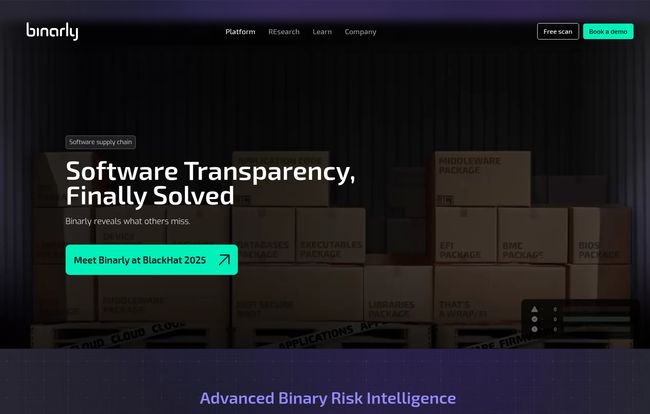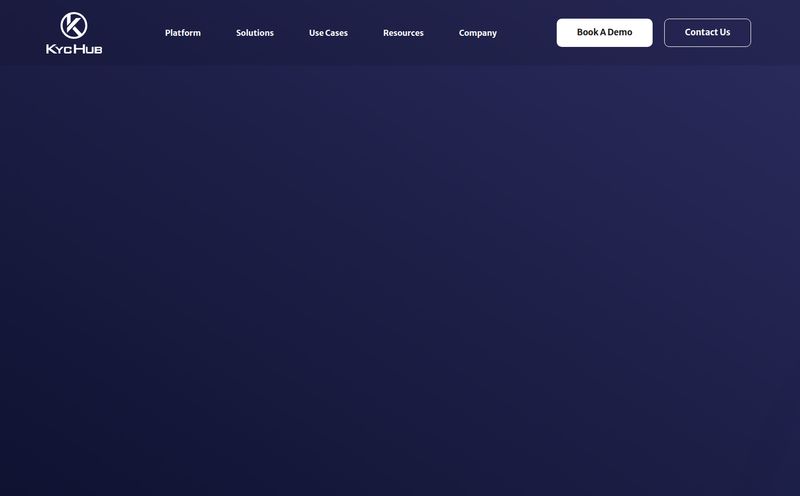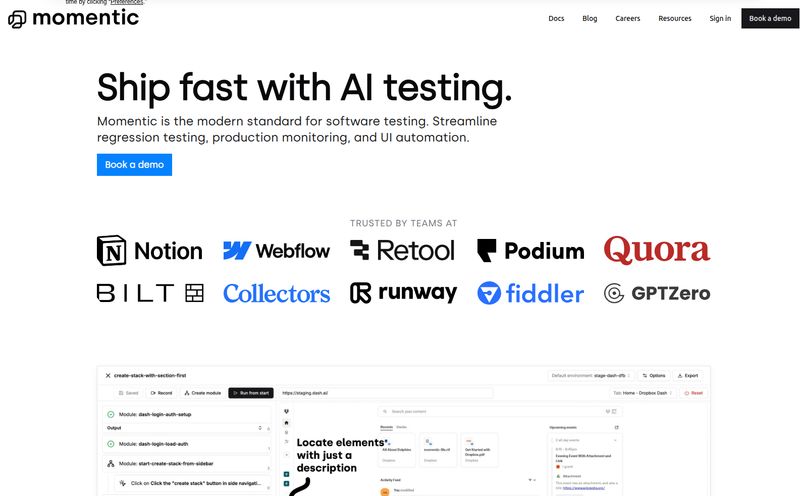Let’s have a little chat. For years, we in the tech and security world have been talking about the software supply chain. It's become one of those buzz-phrases, right up there with 'synergy' and 'paradigm shift'. But behind the jargon is a very real, very scary problem. We’ve all had that cold sweat moment thinking about the hidden dependencies lurking in our code. It's like building a skyscraper but having no idea what the foundation is made of. Could be solid granite. Could be soggy cardboard.
Remember the chaos when Log4j hit the fan? Or the SolarWinds hack? Those weren't just simple bugs; they were foundational cracks in the very trust we place in our software infrastructure. We patch, we scan, we run our SAST and DAST tools, but we're often just skimming the surface. The deepest, darkest threats often live way down in the basement of our technology stack: the firmware. The stuff that tells the hardware how to even start. And that’s a place most security tools are scared to go.
That’s the exact problem a platform like Binarly claims to solve. Their homepage hits you with a pretty bold statement: “Software Transparency, Finally Solved.” My inner skeptic immediately perked up. Solved? That's a mighty big claim. So, I decided to pull back the curtain and see what this is all about.
So, What Is Binarly, Anyway?
In the simplest terms, Binarly is a security platform that performs a deep-tissue massage on your code’s DNA. It doesn't just look at the source code you wrote; it goes straight to the compiled binary files—the 1s and 0s that actually run on a machine. This is crucial because a lot of nasty stuff can be injected during the build process or hidden inside pre-compiled libraries you pull from third parties. It’s focused squarely on firmware security and managing the sprawling, tangled mess that is the modern software supply chain.
Think of it as a specialized forensics team for your software. While other tools are checking the doors and windows (your application code), Binarly is dusting for prints in the ventilation system and analyzing the building's blueprints (the firmware and binaries).
Going Beyond the Surface: Binarly's Key Features
So what’s in the secret sauce? It’s not just one thing, but a combination of capabilities that work together. Based on what I've seen, it boils down to a few core pillars.
Uncovering Hidden Dangers with Binary Analysis
This is their bread and butter. Binarly's platform is built on proprietary static binary analysis. It digs into the compiled code to find not just known CVEs, but also unknown vulnerabilities. This is the holy grail, right? Catching zero-days before they become, well, days. They also claim to do this with “near-zero false positives,” which if true, is a massive win. We’ve all wasted countless hours chasing down alerts from overly sensitive scanners that were just red herrings. Their AI-powered triage helps prioritize what actually matters, scoring vulnerabilities based on how likely they are to be exploited in the wild.

Visit BINARLY
Mapping the Terrifying Maze of Transitive Dependencies
Here we go. The Log4j memorial section. A transitive dependency is the dependency of your dependency. You might use a perfectly safe library, but that library might rely on another, more obscure one with a critical flaw. Manually tracking these is a nightmare. It’s like trying to untangle a ball of Christmas lights in the dark. Binarly promises to automatically identify and map these relationships, giving you a full, unvarnished look at your actual attack surface. This visibility alone is worth its weight in gold for any security-conscious organization.
From Problem to Patch: AI-Assisted Remediation
I’ve gotta say, this part really gets my attention. A lot of security tools are great at telling you you’re in trouble. They'll flash a big red light, send you a 50-page report, and then basically say, “Good luck!” Binarly, on the other hand, offers prescriptive and verified fixes. It doesn’t just identify the problem; it provides actionable guidance on how to solve it. This shifts the dynamic from pure detection to active resolution, which can dramatically shrink the time a vulnerability sits open, waiting for an attacker to find it.
Putting It to Work in a Modern Workflow
A tool is only as good as its ability to fit into how we actually work. A standalone platform that requires manual uploads and constant attention is a non-starter for most fast-moving dev teams. This is where Binarly's CI/CD integration comes in. By plugging into your continuous integration and continuous delivery pipeline, it can provide continuous assessment. Every new build, every release can be automatically scanned, comparing the binaries to previous versions to understand what's changed and if any new risks have been introduced. This is what real DevSecOps looks like—building security into the process, not bolting it on at the end.
The Good, The Bad, and The Binary
No tool is perfect. Let’s be real. It’s important to look at this with a critical eye.
On the plus side, the benefits are clear and potent. You get incredible visibility into the murky depths of firmware, something few other platforms offer. The ability to detect both known and unknown threats is huge. And the focus on transitive dependencies and prescriptive fixes addresses some of the biggest pain points in modern cybersecurity. It’s a proactive, deep-dive tool for a world that has learned the hard way that surface-level scanning isn’t enough.
However, there are a few things to consider. First, interpreting deep binary analysis can require a certain level of expertise. While Binarly uses AI to help triage, this is likely not a tool you hand to a junior dev with a “figure it out” memo. It’s a power tool for teams who understand the stakes. Second, the effectiveness of any such platform is only as good as its analysis engine and the threat intelligence feeding it. Binarly has a strong research arm, which is a good sign, but it's a dependency to be aware of. And then there's the elephant in the room...
The Big Question: What's the Price Tag?
You won't find a pricing page on Binarly's website. I looked. It's the classic enterprise software model: “Explore Product Packages” and “Book a demo.”
What does this mean? It means pricing is almost certainly custom, based on your organization’s size, needs, the number of devices or projects, and which features you need. It also means it’s probably not for the solo developer or small startup running on a shoestring budget. This is a tool designed for enterprises, device manufacturers, and large companies with a dedicated security team and budget to match. It’s a shame, but not surprising.
Frequently Asked Questions About Binarly
- What is firmware security and why does it matter?
- Firmware is the low-level software that boots up hardware and tells it how to function. Securing it is critical because if an attacker compromises the firmware, they can gain persistent control over a device that survives reboots and can be invisible to traditional operating system-level security tools.
- How does Binarly find unknown vulnerabilities?
- Instead of just matching signatures of known threats (like antivirus software), Binarly uses deep static binary analysis and AI to look for problematic patterns, unsafe function calls, and logical flaws in the code's structure that indicate a potential vulnerability, even if it hasn't been discovered or documented before.
- Is Binarly a good fit for a small business?
- In my opinion, probably not. Given its deep specialization and enterprise-style sales model (no public pricing), Binarly is geared towards larger organizations, IoT and hardware manufacturers, or companies with very high security requirements who have the expert staff to manage such a tool.
- What are transitive dependencies again?
- It's the supply chain of your supply chain. If your code uses Library A, and Library A uses Library B, then Library B is a transitive dependency for you. A vulnerability in Library B puts your project at risk, even if you never directly included it.
- Does Binarly replace other security tools like SAST or DAST?
- Not necessarily. Binarly is a specialist. It complements other tools by focusing on an area they often miss: the compiled binary and firmware layer. A robust security posture involves multiple layers; Binarly provides a critical, deep layer that is often overlooked.
Final Thoughts on Shaking the Foundation
After digging in, my initial skepticism about the “finally solved” claim has softened into cautious optimism. No single tool can “solve” security, but Binarly is tackling a fundamental, and frankly, neglected part of the problem. They’re not just putting a better lock on the door; they’re checking the building’s foundation for cracks.
For the right company—one that truly understands the catastrophic risk lurking in the supply chain and firmware—Binarly seems less like a luxury and more like an absolute necessity. It’s a specialized, powerful platform for a very specialized and dangerous set of problems. In a world built on layers of code we don't fully control, having a tool that can see all the way to the bottom is no longer a nice-to-have. It’s a matter of survival.



